
Vietnam Journal
of Agricultural
Sciences
ISSN 2588-1299
VJAS 2024; 7(4): 2317-2326
https://doi.org/10.31817/vjas.2024.7.4.06
https://vjas.vnua.edu.vn/
2317
Received: August 15, 2023
Accepted: December 5, 2024
Correspondence to
hoanganh@vnua.edu.vn
Effects of Market Risk on the Financial
Performance of Food and Beverage
Companies Listed on the Vietnam Stock
Exchange
Dao Thi Hoang Anh*, Nguyen Thi Huong, Dang Thi Hai Yen
Faculty of Accounting and Business Management, Vietnam National University of
Agriculture, Hanoi 12400, Vietnam
Abstract
This study investigated the effects of market risk on the financial
performance of 47 food and beverage companies listed on the
Vietnam Stock Exchange, including the Ho Chi Minh City Stock
Exchange (HOSE) and the Hanoi Stock Exchange (HNX), over the
period of 2008-2022. Forty-seven companies were selected based
on industry classification criteria and relevance in the research
period. The return on assets, return on equity, and net profit margin
were used to represent the financial performance, and the gearing
ratio, book-to-market ratio, and financial leverage as the market risk
factors. This research used the OLS model, fixed effect model
(FEM), and random effect model (REM) for the panel data. The
results showed that the impact of the variables was different in the
different models. The book to market ratio and gearing ratio had
significant negative influences on the companies’ financial
performance while the degree of financial leverage and inflation
rate showed positive consequences due to the moderate level of
inflation in Vietnam over the period of 2008-2022. Usually, the
cash ratio and company size showed a proportional relationship to
financial performance, while the ratio of debt to revenue and debt to
assets had an inverse relationship, meaning an increase will make
the business efficiency decrease. Based on the research results, this
study provided some recommendations to improve food and
beverage companies’ financial performance, and also provided
some information for broader research for non-financial companies
listed on the Vietnam Stock Exchange.
Keywords
Market risk, financial performance, food and beverage, Vietnam
Introduction
Financial performance reflects the degree of success or failure of a
business when it uses its resources to generate revenue and profit.
Additionally, this is a tool for investors, creditors, and

Effects of market risk on the financial performance of food and beverage companies listed on the Vietnam Stock Exchange
2318
Vietnam Journal of Agricultural Sciences
related entities to evaluate a company’s
operations to make investment and credit
decisions. There are many previous studies that
have used indicators such as return on assets,
return on equity, and net profit margin to
measure the financial performance of a business
(Badawi, 2017; Oduobuasi et al., 2020). The
food and beverage industry is one of the most
important sectors of Vietnamese economy, not
only because of its contribution to the GDP but
also in creating millions of jobs for workers.
With Vietnam’s large population, rich culinary
culture, and potential domestic market, this
industry is on a strong development path and
has attracted great investments both
domestically and internationally. According to
forecasts by BMI Research, the food and
beverage branch of Vietnam will maintain a
10.9% compound annual growth rate for the
period of 2017-2019. BMI has also predicted
that the growth of the dairy industry is expected
to be nearly 10% and the alcoholic beverages
industry approximately 11.1%, and resident
demand will focus on these sectors due to their
essential commodities characteristic. However,
the more diversified and variegated the socio-
economic activities, the more potential risks
there are. Risk occurs randomly, causing
damage to related entities (Taleb, 2007), and
represents unexpected events (Eugene & Joel,
2007). In financial terminology, risk can be
understood as a change in actual compared to
predicted outputs, and risk includes the
possibility of losing a part or all of the initial
investment capital. Common risks to businesses
include liquidity risk, credit risk, market risk,
and other kinds of non-financial risks.
Specifically, market risk, which is represented
in the systemic risks, can’t be eliminated
through portfolio diversification, and tends to
affect the whole market at the same time. Most
research and studies on market risk and
financial performance have focused on the
financial banking sector with the factors of how
market risk comprises the exchange rate risk,
interest rate risk, and stock price risk
(Nimalathasan & Puwanenthiren, 2012;
Ngalawa & Ngare, 2013; Muriithi et al., 2016;
Abdellahi et al., 2017; Badawi, 2017).
According to Circular 13/2018/TT-NHNN,
market risk is the risk caused by adverse
fluctuation in interest rates, exchange rates, gold
prices, stock prices, and commodity prices on
the market. However, due to its systematic
characteristic, market risk also greatly affects
the financial performance of non-financial
enterprises. Many studies have examined the
impact of market risk on the financial
performance of non-financial companies by
using different econometric methods based on
financial performance and risk indicators
represented on corporate financial statements
(Kassi et al., 2019). There have been previous
studies that have used a number of common
factors representing market risk, including the
degree of financial leverage (Bhatti et al., 2010;
Alaghi, 2011; Dimisyqiyani et al., 2015;
Muriithi et al., 2016; Kassi et al., 2019); the
book to market ratio (Fama & French, 1993;
Lakonishok et al., 1994; Chen et al., 2005;
Kassi et al., 2019); the gearing ratio (Briston,
1981; Linsley & Shrive, 2006; Akhtar et al.,
2011; Siyanbola et al., 2015; Kassi et al., 2019);
and inflation (Huybens & Smith, 1999; Khan et
al., 2001; Ozturk, 2012).
The period of 2020-2022 was a time when
the world in general and Vietnam in particular
were seriously affected by the Covid-19
pandemic. Covid-19 forced Vietnamese people
to tighten spending, and consumers cut back on
purchasing beer, wine, and soft drink products.
Instead, they choose to buy and store products
that have a long shelf life and that have the
ability to improve health. Therefore, if food
and beverage companies want to ensure their
financial performance, they must make
decisions such as developing new products and
changing their product structure to fit the
consumers’ demands. In this case, these market
risks, including the degree of financial
leverage, the book to market ratio, the gearing
ratio, and inflation, will affect the decision
making of each business, therefore affecting
financial performance.
For businesses, changes in interest rates will
change interest costs. The difference between
earnings before interest and taxes (EBIT) and
earnings before taxes (EBT) shows the
magnitude of interest expense (degree of
financial leverage), which is considered a factor
affecting the financial performance based on the
business’s decision of borrowing in conditions

Dao Thi Hoang Anh et al. (2024)
https://vjas.vnua.edu.vn/
2319
of changing interest rates. Stock price risk is the
risk caused by adverse fluctuations in stock
prices on the market (market value) to the value
of stocks (book value). The book to market ratio
evaluates a company’s book value about its
current market value. The book value is
determined based on accounting data, while the
market value is based on market capitalization.
In some cases, the market to book ratio can be
used with the same meaning. If the market value
is greater than the book value, the company is
appreciated by the market, and vice versa. This
ratio can be used as the factor of market risk
affecting expected income and investment
decisions, therefore, on financial performance.
Economic theories have demonstrated that
inflation does not always cause a contrary
impact on the economy. James Tobin and
Robert Mundell, the two economist winners of
the Nobel Memorial Prize in 1981 and 1999,
respectively, have argued that moderate
inflation would make real interest rates become
lower, hence companies should increase their
borrowing to expand their businesses (Mundell-
Tobin effect). Many studies have shown that the
effect of the inflation rate on economic growth
generally and a company’s financial
performance specifically is positive or negative
depending on the magnitude of the inflation and
the sustainability of the economy (Huybens &
Smith, 1999; Khan et al., 2001; Ozturk, 2012).
This study was conducted to analyze the
impact of market risk on financial performance
in the case of the food and beverage companies
listed on the Vietnam Stock Exchange, including
the Ho Chi Minh City Stock Exchange (HOSE)
and the Hanoi Stock Exchange (HNX), in the
period of 2008-2022. This research aimed to
provide a scientific basis for the food and
beverage companies to propose appropriate
recommendations to improve the financial
performance of food and beverage companies
listed on the Vietnam Stock Exchange, thereby
serving as material for research on non-financial
companies in the future.
Methodology
Data collection
Currently, on the Vietnam Stock Exchange,
there is no official Government organization
that has the responsibility of arranging listed
corporations into industries. Therefore, this
analysis used the NAICS (North American
Industry Classification System) and ICB
(Industry Classification Benmark) standards to
select food and beverage companies listed on
the Vietnam Stock Exchange, for a result of 61
companies. After that, out of the 61 food and
beverage institutions listed on the Vietnam
Stock Exchange, this study selected 47
companies with appropriate data and
information in the 2008-2022 research period.
Description of variables
The return on assets, return on equity, and
net profit margins were used to represent the
financial performance (Badawi, 2017;
Oduobuasi et al., 2020). The independent
variable was divided into two groups: (1)
Market risk variables, which involved the
degree of financial leverage, book to market
ratio, gearing ratio, and inflation; and (2)
Control variables, which included the cash ratio,
debt to revenue ratio, company size, and
tangibility ratio (Table 1). These variables were
selected on the basis of previous research.
Empirical model
To determine the effect of market risk on
financial performance, this research used the
return on assets, the return on equity, and the net
profit margins as dependent variables
(Siyanbola et al., 2015; Muriithi et al., 2016;
Abdellahi et al., 2017; Kassi et al., 2019) under
the hypothesis that these variables are stationary
variables:
ROAit=0+ 1DFLit+ 2BPRit+ 3GEARit+
4INFit + 5CASHit+ 6DORit+ 7DOAit+
8SIZEit+ 9TANGit+ 1i+ 1it (Model 1)
ROEit = 0 + 1DFLit+ 2BPRit+ 3GEARit+
4INFit+ 5CASHit+ 6DORit+ 7DOAit+
8SIZEit + 9TANGit+ 2i+ 2it (Model 2)
PROFit=0+ 1DFLit+ 2BPRit+ 3GEARit+
4INFit + 5CASHit+ 6DORit+ 7DOAit+
8SIZEit+ 9TANGit+ 3i+ 3it (Model 3)
where ROA is the return on assets; ROE is
the return on equity; PORF is the net profit
margins; DFL is the degree of financial
leverage; BPR is the book to market ratio;

Effects of market risk on the financial performance of food and beverage companies listed on the Vietnam Stock Exchange
2320
Vietnam Journal of Agricultural Sciences
GEAR is the gearing ratio; INF is the annual
inflation; CASH is the cash ratio; DOR is the
debt to revenue ratio; DOA is the debt to total
assets; SIZE is the company size; and TANG is
the tangibility ratio.
Empirical Procedures
This study examined the impact of market
risk on a company’s financial performance by
the following steps:
Step 1: Test for unit roots or stationarity in
the panel datasets according to the Im et al.
(2003) test (IPS), and Fisher-type (Choi 2001)
with the null hypothesis that all panels contain a
unit root.
H0: Panels contain unit roots
H1: Panels are stationary
Step 2: Run the OLS model, REM (random
effect model), and FEM (fixed effect model).
Step 3: Select the appropriate model for this
research. The Hausman test was used to
determine the acceptable estimation method
between the FE and RE models (Gujarati, 2004;
Baltagi, 2008). The hypothesis assumed that
there was no correlation between the
characteristics errors of the independent and
explanatory variables. If there is no correlation
between the regressors and effects, then the FE
and RE models are both relevant, but FE is
irrelevant. By contrast, FE is consistent and RE
is inconsistent. The LM test (Breusch & Pagan,
1980) for heteroskedasticity will choose the
OLS model if variance is equal to zero;
otherwise RE will be picked. In the case of
preferring the FE model from the Hausman test,
the Chow test (Chow, 1960) will determine the
appropriate model between OLS and FE, in
which, if individual influences are equal to zero,
the OLS model is better.
Table 1. Description of variables
Variables
Description
Previous research
Expected sign
Dependent variable
ROA
Return on asset = Net income/ Total assets
Badawi (2017); Oduobuasi et al. (2020)
ROE
Return on equity = Net income/ Equity
Badawi (2017); Oduobuasi et al. (2020)
PFOF
Net profit margins = Net income/ Net sale
Badawi (2017); Oduobuasi et al. (2020)
Independent variables
Market risk
DFL
The degree of financial leverage = Earnings
before interest and taxes/ Earnings before
taxes
Bhatti et al. (2010); Alaghi (2011); Dimisyqiyani et
al. (2015); Muriithi et al. (2016); Kassi et al. (2019)
+/-
BPR
Book to market ratio = Book value/ Market
value
Fama & French (1993); Lakonishok et al. (1994);
Chen et al. (2005); Kassi et al. (2019)
-
GEAR
Gearing ratio = Total debts/ Equity
Briston (1981); Linsley & Shrive (2006); Akhtar et al.
(2011) and Siyanbola et al. (2015); Kassi et al.
(2019)
+/-
INF
The annual inflation rate in Vietnam in the
period of 2008-2022
Huybens & Smith (1999); Khan et al. (2001); Ozturk
(2012)
+/-
Control variables
CASH
Cash ratio = Cash and Cash equivalents/
Total assets
Abushammala & Sulaiman (2014); Akinyomi (2014);
Bhutto et al. (2015); Nenu et al. (2018); Kassi et al.
(2019)
+
DOR
Debt to revenue ratio = Total debts/ Revenue
Demyanyk et al. (2011); Lawes & Kingwell (2012);
Brown et al. (2015); Kassi et al. (2019)
+/-
DOA
Debt to asset ratio = Total debts/ Total
assets
Gill & Obradoich (2012); Salim & Yadav (2012);
Davydov (2016); Vy & Nguyet (2017); Amraoui et al.
(2017); Kassi et al. (2019)
+/-
SIZE
Company size = Ln(Total assets)
Ilaboya & Ohiokha (2016); Amraoui et al. (2017);
Bayoud et al. (2018); Kassi et al. (2019)
+
TANG
Tangibility ratio = Tangible fixed assets/
Total assets
Vătavu (2015); Razaq & Akinlo (2017)
-

Dao Thi Hoang Anh et al. (2024)
https://vjas.vnua.edu.vn/
2321
Step 4: If the selected model shows the
heteroskedasticity phenomenon, the robust
standard errors will give a correct estimation of
the standard error, accepting the presence of
heteroskedasticity.
Results and Discussion
Descriptive Statistics
Table 2 presents the descriptive statistics
of all the variables with 700 observations
(corresponding to 47 companies over 15
years). The average values of all the variables
were greater than zero indicating a positive
tendency. In particular, ROA, ROE, and PROF
increased by 7.2%, 25.7% and 5.6%,
respectively. The minimum values of the
variables related to the income target were less
than zero. However, the variations among the
maximum values were huge.
Table 2. Descriptive statistics
Variables
Obs.
Mean
Std.Dev
Min
Max
Dependent variables
ROA
700
0.072
0.095
-0.645
0.783
ROE
700
0.257
3.378
-3.674
89.100
PROF
700
0.056
0.113
-0.918
1.677
Market risk variables
DFL
700
1.785
2.802
-31.026
24.197
BPR
700
1.345
1.217
-1.537
9.877
GEAR
700
3.728
63.859
-21.097
1,689.877
INF
700
0.067
0.055
0.006
0.199
Control variables
CASH
700
0.116
0.130
0.000
0.696
DOR
700
0.489
0.561
0.025
9.687
DOA
700
0.479
0.216
0.034
1.516
SIZE
700
27.559
1.629
24.449
32.582
TANG
700
0.189
0.125
0.004
0.736
Table 3. Correlation analysis
Variables
(1)
(2)
(3)
(4)
(5)
(6)
(7)
(8)
(9)
(10)
(11)
(12)
(1) ROA
1.000
(2) ROE
0.026
1.000
(3) PROF
0.760
0.017
1.000
(4) DFL
-0.150
-0.007
-0.084
1.000
(5) BPR
-0.250
-0.057
-0.186
0.208
1.000
(6) GEAR
-0.014
-0.693
-0.085
0.005
-0.035
1.000
(7) INF
0.142
0.028
0.088
-0.001
0.054
-0.034
1.000
(8) CASH
0.348
0.020
0.213
-0.166
-0.194
-0.040
0.057
1.000
(9) DOR
-0.383
-0.011
-0.348
0.138
0.114
0.035
-0.134
-0.272
1.000
(10) DOA
-0.542
-0.084
-0.458
0.238
0.049
0.106
-0.111
-0.378
0.476
1.000
(11) SIZE
0.068
0.043
0.250
-0.012
-0.098
-0.040
-0.186
-0.092
0.173
0.058
1.000
(12)TANG
-0.025
-0.087
-0.056
-0.012
0.045
0.004
0.041
-0.121
-0.038
-0.014
0.017
1.000

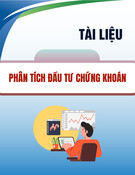

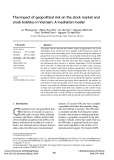

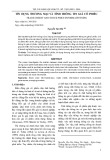

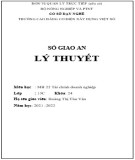



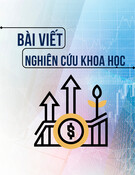

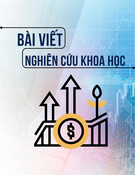
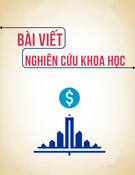



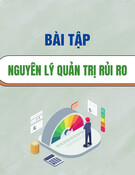

![Đề thi Tài chính cá nhân kết thúc học phần: Tổng hợp [Năm]](https://cdn.tailieu.vn/images/document/thumbnail/2025/20251015/dilysstran/135x160/64111760499392.jpg)


![Câu hỏi trắc nghiệm và bài tập Thị trường chứng khoán [mới nhất]](https://cdn.tailieu.vn/images/document/thumbnail/2025/20251001/kimphuong1001/135x160/75961759303872.jpg)


